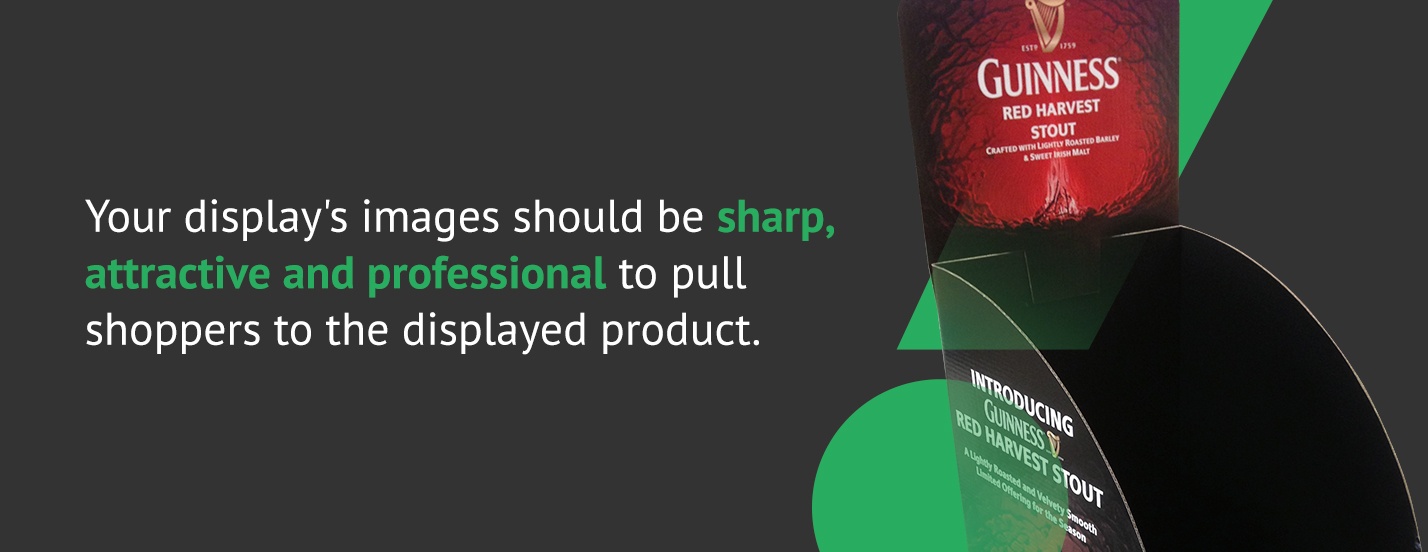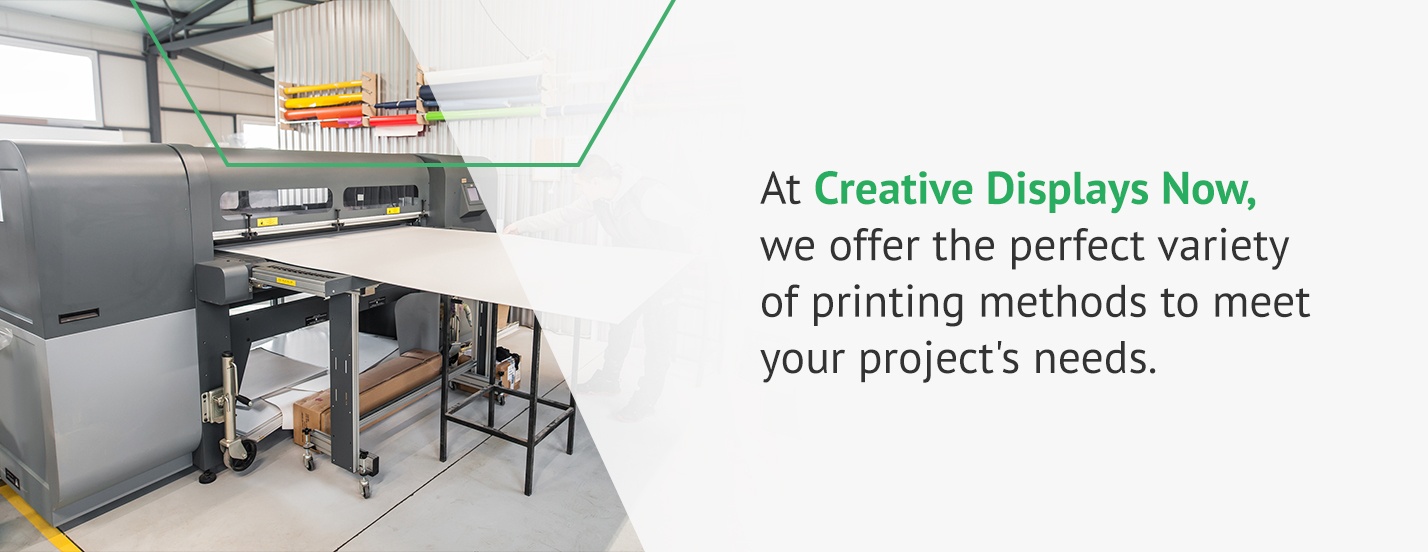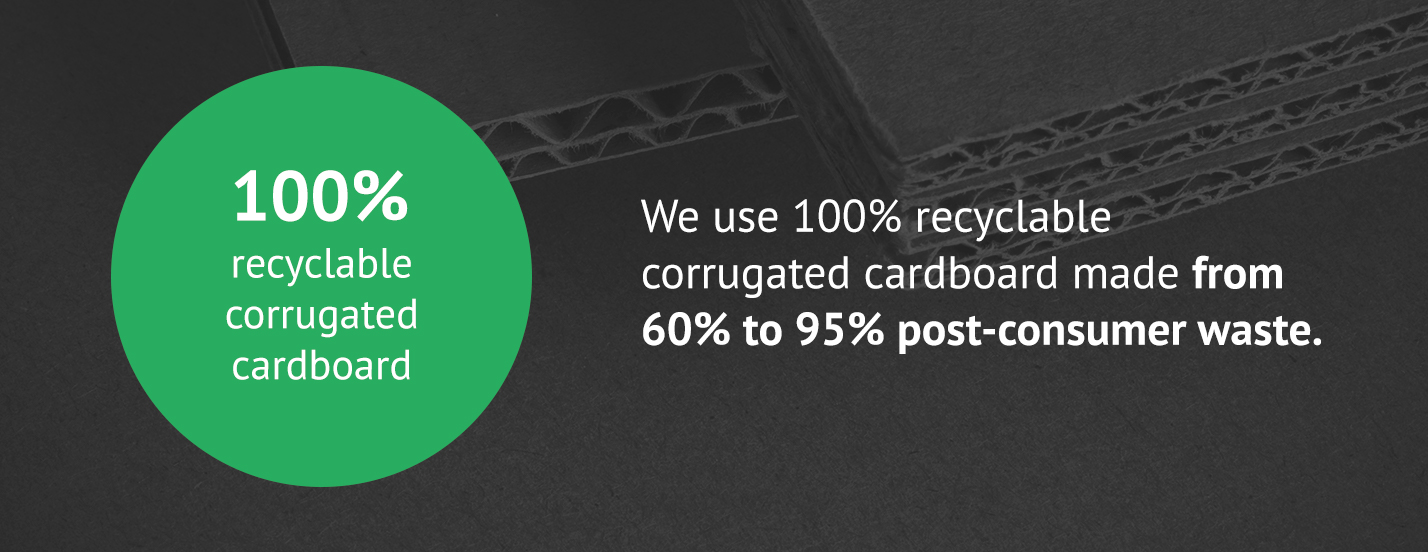Chapter 3: POP Display Printing
Effective POP displays feature attention-grabbing designs. These designs must be visible from a distance, so customers can be drawn to the display even if they’re 30 feet away. It’s essential to use a quality printing process to ensure customers can see your brand’s logo from multiple points in the store. Your display’s images should be sharp, attractive and professional to pull shoppers to the displayed product.
You’ll want to work with a reliable display manufacturer who offers various printing options to meet your needs. In this chapter, we’ll explore the different printing methods used to create POP displays. If you have any questions about our printing techniques at Creative Displays Now, we’ll be happy to help.
Point-of-Purchase Display Printing Methods
You’ll find plenty of printing methods available, but not every technique is suitable for creating retail displays. The right printing method for your POP display is the one that will make it stand out. It’s also critical to choose a process that can meet your time and quantity needs. Here are the different types of printing methods that work best for POP displays:
1. Lithographic Printing
Lithographic printing, also called offset printing, is commonly used for mass-produced items like packaging, books, magazines, newspapers and posters. With this method, an image is transferred to a plastic or metal plate, which then gets covered with ink. The plate transfers the image to a rubber sheet, which applies the final image.
Lithographic printing creates an exact image, and it can quickly print large orders. At Creative Displays Now, we use lithographic printing to transfer high-resolution graphics to paper and then adhere the paper to corrugated cardboard, producing photo-quality results.
2. Flexographic Printing
Flexographic printing is often used to create labels, packaging and items featuring a repetitive pattern, like wallpaper or wrapping paper. It’s a budget-friendly method that’s ideal for printing simple artwork or logos, and it may be recommended for color palettes of one to three colors. Flexographic printing can be applied to a range of mediums, including objects with uneven surfaces.
With flexographic printing, the image is directly applied to the substrate using a flexible rubber or plastic relief plate. The process is fast, produces high-quality images and is suitable for large volumes.
3. Digital Printing
Digital printing is a modern technique typically used for labels, posters and signage. With digital printing, images in the form of a digital file are sent to a printer. The printer then applies an image directly to the substrate without the need for printing plates. It’s a simple, fast process that may be used for printing small quantities. Like the other printing methods used to create POP displays, you can expect quality images with digital printing.
What We Offer
At Creative Displays Now, we offer all of the above printing methods to meet your project’s needs. In addition, our G7-certified prepress technology ensures consistency, so your display’s colors will accurately match your brand and vision.
How to Choose a POP Display Printing Method
Lithographic, flexographic and digital printing all create professional, high-resolution images and have a place in the POP display world. The one you choose mostly depends on the following factors:
- Project size: How many displays do you need to print? If you have a large order, it’s more cost-effective to go with lithographic or flexographic printing. Digital printing is typically reserved for smaller orders.
- Design: Are you looking to print a custom color or intricate details? Though digital printing technology has evolved to produce sharp, clear images, lithographic printing has long been a reliable method for exceptional image quality.
- Time requirements: If you need POP displays right away, consider digital printing. Since digital printing does not use relief plates, it can be completed faster than lithographic and flexographic methods.
If you’re still not sure which printing method to select for your POP display, that’s all right. At Creative Displays Now, we’ll recommend the best technique for your project, budget and goals.
What Types of Designs Can You Print on POP Displays?
Do you have photos to tell your brand’s story? Or did you hire an artist to draw up a highly detailed mascot for your brand? Have no worries — you can transfer just about any image or color to a POP display. This may include:
- Logos
- Mascots
- Unique colors
- Patterns
- Photos
- Artwork
- Symbols
- Text
If you already have artwork or graphics you want to print on your display, you can work with a manufacturer to incorporate your design into the unit’s structure. If you feel stuck, a display manufacturer may also help you through the design process.
At Creative Displays Now, our team of designers can help you realize your vision. We do everything under one roof, from custom design creation to display delivery, ensuring quality, consistency and speed.
What Are POP Display Materials?
Semi-permanent or permanent displays might consist of wood, metal, plastic, fiberglass or a combination of materials. Temporary displays are often built with corrugated cardboard. Corrugated cardboard has many benefits, such as:
- Recyclable: Corrugated cardboard is made from recycled, biodegradable fiber. You can help improve the environment by choosing a material that won’t create more waste or add to your carbon footprint.
- Customizable: Corrugated cardboard is an extremely versatile and customizable material. You can shape it however you wish and coat it with ink, adhesives or other treatments. In other words, you don’t have to limit your creativity when designing a corrugated cardboard POP display.
- Economical: Corrugated cardboard is an inexpensive material. It does not require high labor, manufacturing or shipping costs compared to heavier, more permanent mediums.
- Lightweight but durable: Since corrugated cardboard isn’t too heavy, it’s easy to move around to different spots in a store. It’s also a relatively strong material, meaning you can safely stock your product and keep it looking neat. Unlike paperboard, corrugated cardboard has a sheet of fluted paper sandwiched between two outer layers, adding strength, insulation and cushioning to the material. This ingenious engineering is the reason packages are delivered to your front door in cardboard boxes.
- Easy to assemble and install: You don’t have to gather a hammer and nails to build a cardboard POP display. You and your business partners will appreciate how quickly you can put these displays together and get your products to customers.
At Creative Displays Now, we use 100% recyclable corrugated cardboard made from 60% to 95% post-consumer waste. You can feel proud of your eco-friendly display with a stunning design.



